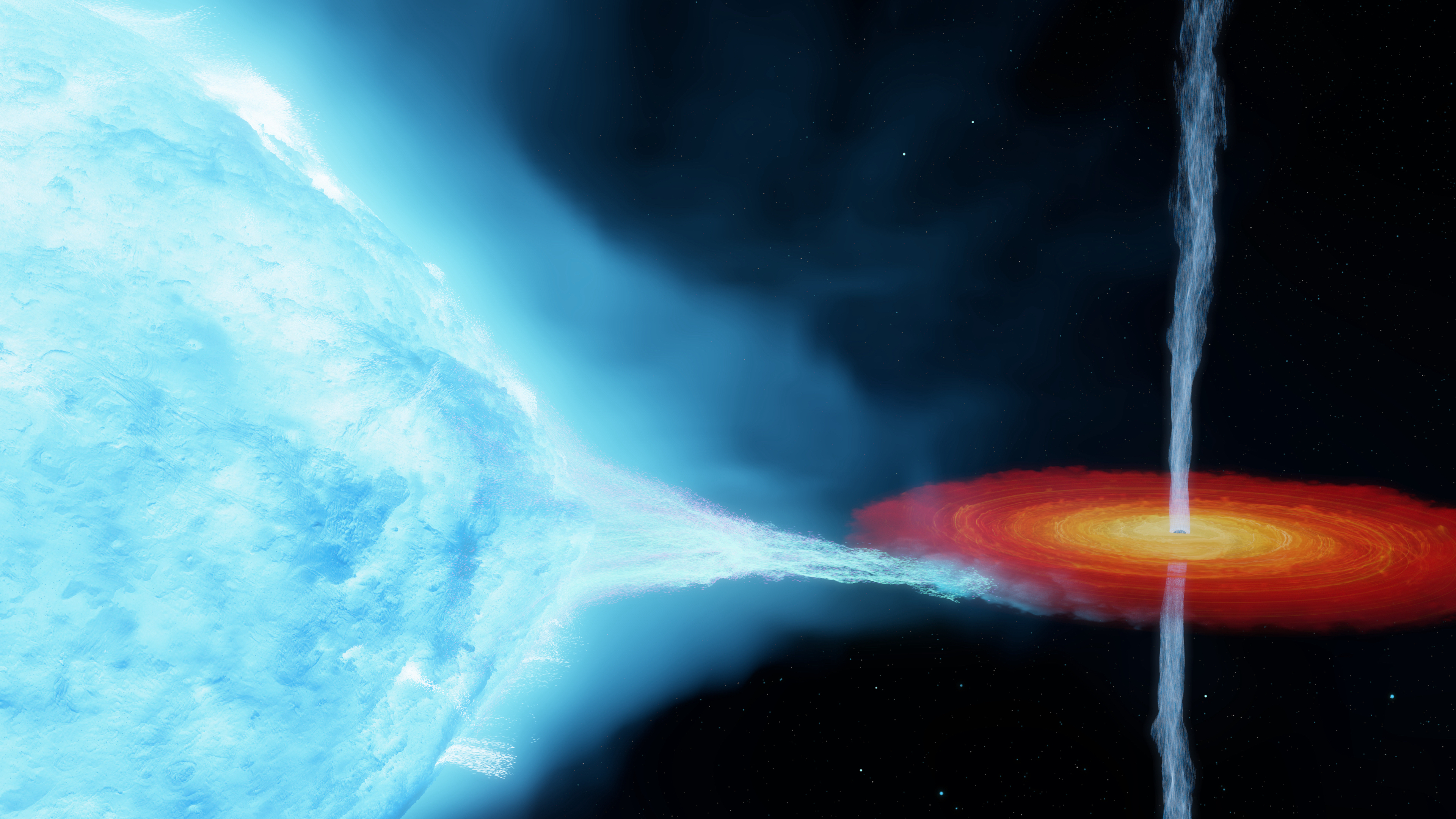Daily Image
19-02-2021Cygnus X-1 contains a 21-solar mass black hole
| Submitter: | B. Marcote (Miller-Jones et al.) |
| Description: | The evolution of massive stars is influenced by the mass lost to stellar winds over their lifetimes. These winds limit the masses of the stellar remnants (such as black holes) that the stars ultimately produce. Cygnus X-1 is one of the closest black holes to Earth, and it was discovered in 1964 when a pair of Geiger counters were carried on board a sub-orbital rocket launched from New Mexico. Now, in a paper published today in Science and led by Miller-Jones (ICRAR), we have refined the distance to Cygnus X-1 thanks to a more precise parallax measurement achieved after conducting a detailed campaign with the Very Long Baseline Array. These new observations revealed that Cygnus X-1 is further away than previously thought, at a distance of about 2.22 kpc. This distance had serious implications on the mass of the black hole, telling us that the black hole is more than 20 times the mass of our Sun — a 50 per cent increase on previous estimates. Stars lose mass to their surrounding environment through stellar winds that blow away from their surface. But to make a black hole this heavy, we need to dial down the amount of mass that bright stars lose during their lifetimes. Accompanying the publication in Science, two further papers focusing on the black hole spin parameter and the wind mass-loss rates of stripped stars have also been published today in The Astrophysical Journal. |
| Copyright: | International Centre for Radio Astronomy Research |
| Tweet |  |
